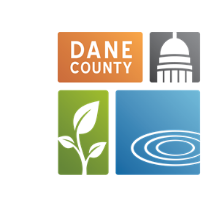
Prairies are temperate grasslands made up of mostly native grasses, sedges, and flowering plants. Tallgrass prairies are among the most decimated and threatened natural communities in the Midwest and the world. Most native prairies found today in Wisconsin are small remnants that are less than 10 acres in size. Prairies are made up of native plants with deep root systems that can capture and store 1/2 to 1 ton of carbon per acre per year which is comparable to forests. They also help soak up rain water which can help reduce flooding and recharge our groundwater supplies.
Prairies plants are adapted to the local climate and soils, are drought tolerant, and have deep root systems that help infiltrate rain water. Native plants can also be used in home landscaping to help return some of the benefits of our lost prairies. Once established, native plants are aesthetically pleasing and require little watering, fertilizing and mowing. The reduced maintenance can lead to significant cost savings when compared to labor-intensive turf grass. They also provide important ecosystem services such as improved water quality and habitat and food for local wildlife, including numerous pollinator species.
The Dane County Park System contains over 9,000 acres of natural areas including prairies, wetlands, oak woodlands, and forests. The Natural Areas Program aims to restore and sustain natural communities while helping to foster a deeper connection to our natural resources. Learn more on our Natural Areas Program webpage.
Seed Collection
Dane County has a large seed collection program, collecting and processing native plant seeds from prairie, savanna, wetland, and woodland ecosystems. In 2022, volunteers, staff and partners collected and processed 3,676 pounds of seed from 238 native species with an estimated worth of over one million dollars. Each year the seed is used to help restore and add plant diversity to hundreds of acres of prairie habitat. Without seed collection efforts, this level of restoration would not be financially possible. If you are interested in volunteering with this program, sign up for our volunteer email list to receive notifications about seed collection and seed cleaning dates.
Seed has also been used to help increase biodiversity in the county's Continuous Cover Program, to support our department's Free Native Plants program, and to create free native seed libraries in Dane County libraries.
Controlled Burning
Dane County’s native ecosystems rely upon regular and reoccurring prescribed fire to remain diverse and resilient landscapes. Professionally trained staff and volunteers conduct prescribed burns on over 650 acres of county-owned land annually, which help combat brush, manage invasive species, and maintain healthy native habitat. Treatments of prescribed fire have 1-5 years frequencies depending on the type of natural community and the management objectives for the site.
Invasive Species Management
Invasive species can spread quickly and out-compete native species. Therefore, invasive species management is a top priority in our park system. Management activities are conducted by professionally trained staff and volunteers. These activities include cutting, pulling, digging, prescribed fire, mowing, herbicide, and biological control. Learn more on our Invasive Species Management webpage.
In addition to the work we do on County-owned properties, we encourage homeowners, businesses and community groups to increase native plantings as well. This includes educating residents about native plants and providing resources to help them access plants and seeds.
The following local programs help Dane County residents access native plants for their own yards or community spaces: